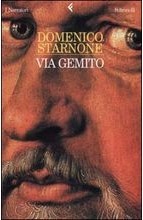What do you think?
Rate this book


389 pages, Paperback
First published April 1, 2000
Via Gemito is a novel, that is, it’s neither an autobiography nor a biography. I brought it to life by taking a pinch of reality (real names, real places, and events that really happened) and then using my imagination to dig deep, exactly like I have done with my other books. To make it clear, in general I work with sources – data from memory or anecdotes – which on their own, scrutinized with a historian’s rigor, would not take even half a page. But when an obsession animates them and the imagination augments them, they become a long uninterrupted story.
